Following the ancient Roman roads of Umbria and Tuscany, you will notice threads of golden sunlight coaxing the landscape to produce the very best seasonal flavours from fruit and vegetables.
There are regional specialities galore. But Italian cuisine’s unifying secret is high quality seasonal produce that is prepared with pots of passion and tempered with simplicity.
Olive Oil
If there is one single ingredient that brings all the flavours of Umbria and Tuscany together; it is EVOO. The superlative virginal queen-of-green herself: cold pressed extra-virgin olive oil. With acidity as low as 0.01%, Umbrian EVOO is pure, unrefined and unadulterated by heat or chemicals during the extraction process. This allows the full rich, fragrant olive oil experience. The best time to taste it is just-pressed in September – November. Table colours vary from bright spring green to autumn-gold.
At Villa Gioiella Holiday Home on the Umbria | Tuscany border you will enjoy olive oil from the olive grove. Once you have samplled the real flavour of fresh olive oil it is impossiblle to go back! To order at home (international delivery) or to buy to take home, Villa Gioiella recommends OLIVANDO. Grown and harvested by wife and husband team, Amanda Forman and Marco Simonelli See more on their website HERE
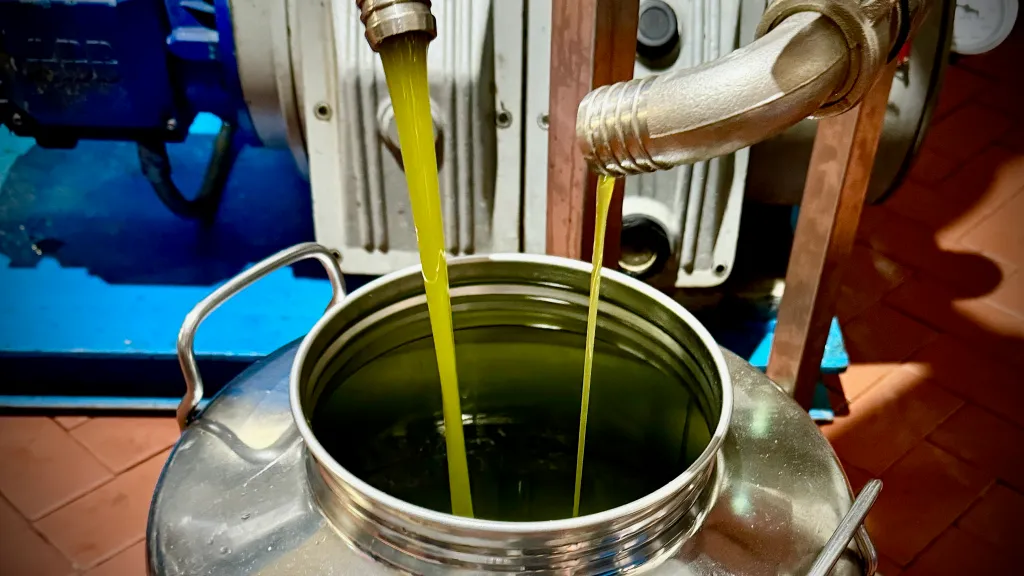
Compared to olive oils from around the world, Italian EVOO retains its spot as internationally renowned for a reason: its low acidity level, richness, and variety of fragrances. In Umbria the secret is the extreme change in weather conditions from summer to fall. Other Italian EVOOs are often described as delicate, with notes of almond or ripe tomato, while sensations of bitterness and spice characterize Umbrian EVOO. Is the best? I’d love to hear that conversation played out at a mixed-region dinner table! ”
Amanda Forman
PECORINO DI PIENZA CHEESE
The Val d’Orcia is Southern Tuscany’s quintessential Renaissance-painting landscape. Ravishing hills wiggle down to flat chalk plains and sunlight casts curious shadows. A UNESCO World Heritage Site, the valley is bordered by Siena, and Mount Amiata. For centuries the area has attracted the artistic, entranced the romantic and satiated the hungry traveller. The picturesque towns of Pienza and Montalcino are not only quaint and ancient – but they are veritable foodie super-powers.
Pecorino Stagionato, served with pears or drizzled with strong chestnut honey. Pecorino can be used to finish pasta dishes as an alternative to Parmegano.
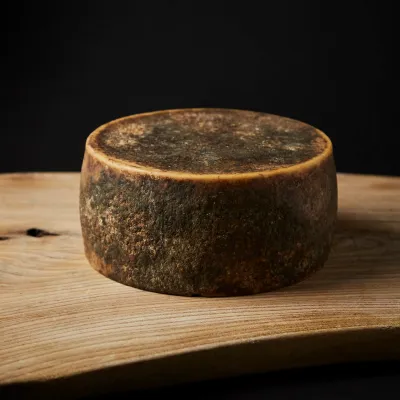
LAKE TRASIMENO FISH
Trasimeno cuisine is as diverse as the landscape. Surrounded by rich rolling countryside, Chiana beef, pheasant and wild boar often share the same menu with perch, pike, carp, tench and eel. All dressed in local virginal olive oil. Umbria is famous for its truffles, and the Trasimeno region is no exception. Best in Autumn, served with local homemade pasta such as pici in restaurants that dot the waterfront near the towns of Castiglione del Lago and Passignano sul Trasimeno.
Carnivore, vegetarian, and these days increasingly gluten-free, the restaurants, markets and supermarkets of Tuscany and Umbria offer something for everyone
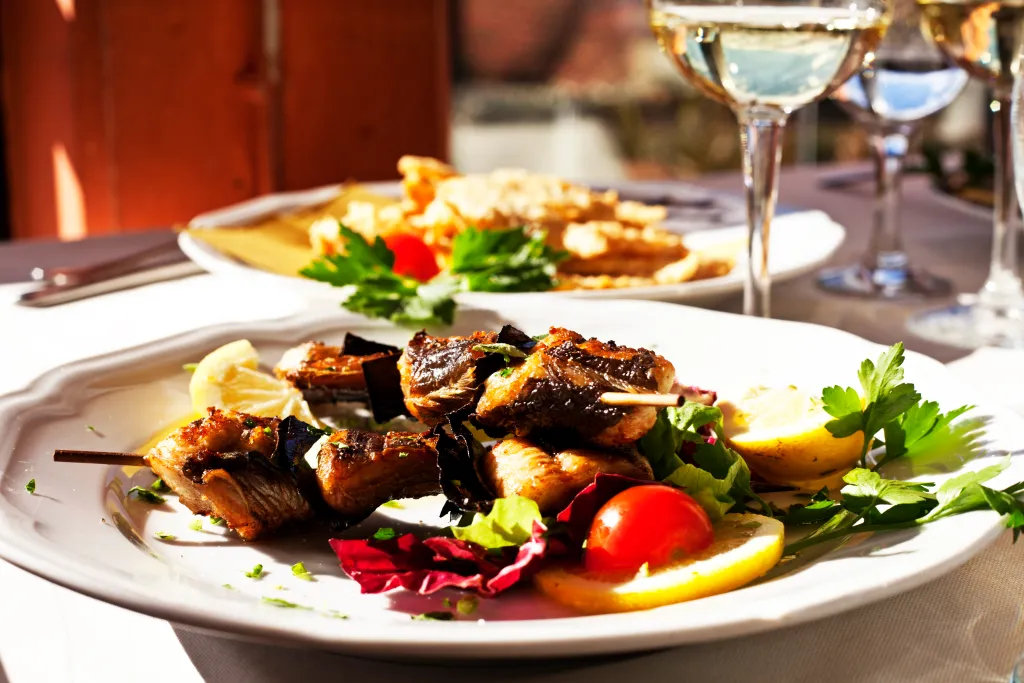
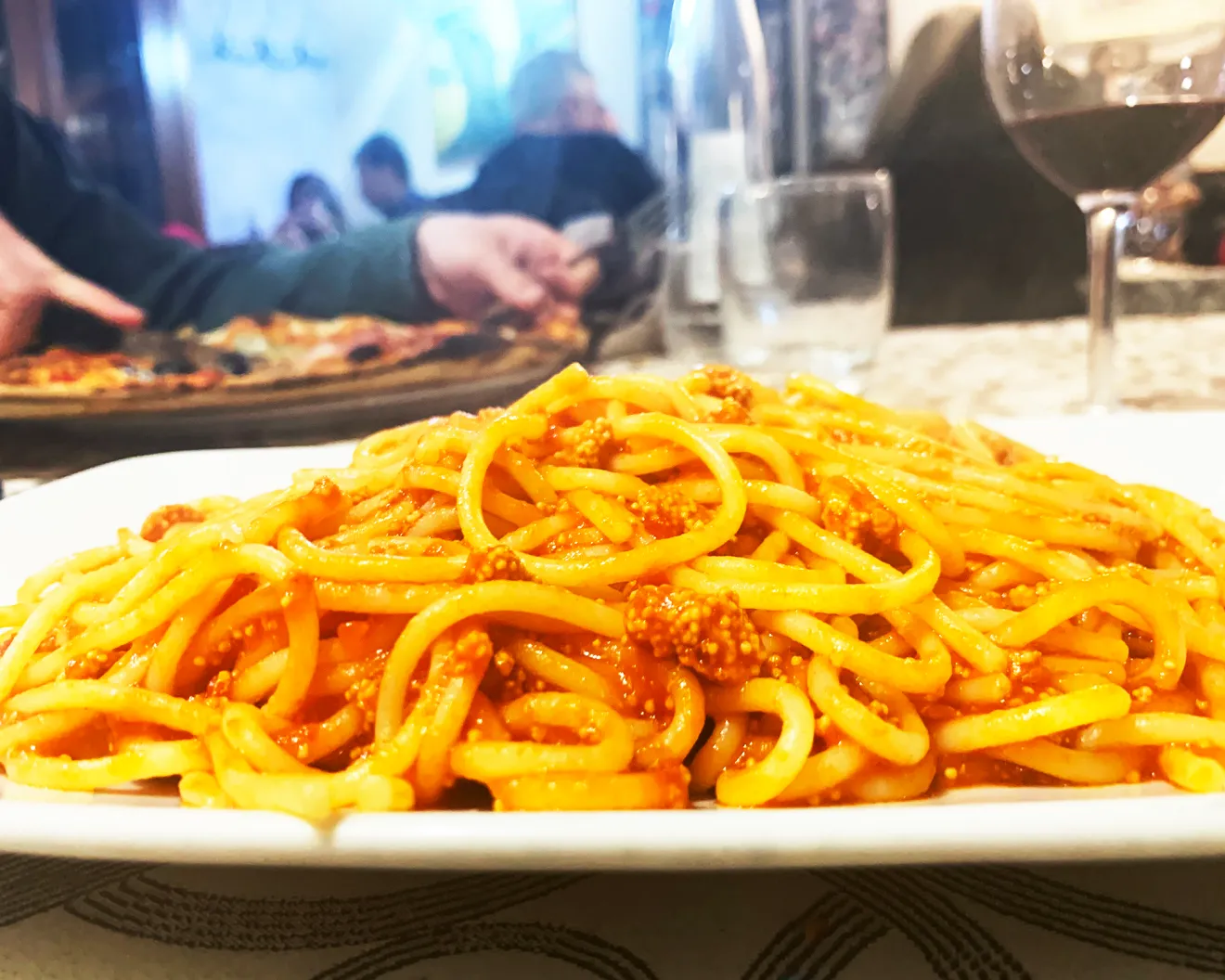
TRUFFLES
The frisky flavor of fresh truffle was once banned by the Catholic Church for its sexy aphrodisiac aroma.
These days, there are two types of exciting truffle experience: the first is to eat them in a local restaurant. The second is to go out and dig them up. Umbria produces the highest number of black truffles in Italy.
Cinta Senese Pigs
First raised by the Etruscans, Cinta Senese are the predecessors of all Tuscan breeds. The black band around their bellies has given the porkies their name as Cinta means ‘belt’ in Italian. (Senese, for Sienna – the region in Tuscany).
After the import of more productive and prolific breeds, pig-farmers, quite understandably, focused on maximising profits. For a while there, things were looking extremely bleak. Until 2012, the indigenous breed teetered on the edge of extinction. A Government backed project then granted them Designation of Origin (PDO) status, which saved the breed. Now recognised worldwide as a ‘niche product of exceptional quality’. Free to roam the forests, the low fat meat tastes of forest acorns, hazelnuts and chestnuts. The Spanish have their Pata Negra jamon and Tuscany has its Cinta Sense prosciutto.
Cinta Senese meat is cured traditionally, according to the cut.
Finocchiona is a Tuscan salami dating back to the Middle Ages, created by creative butchers to replace expensive pepper with aromatic wild fennel, which is prevalent in the fields of Tuscany.
Guanciale is the fatty cheeks of the pig. A delicious cured-meat enjoyed thinly sliced or slightly heated on unsalted Tuscan bread.
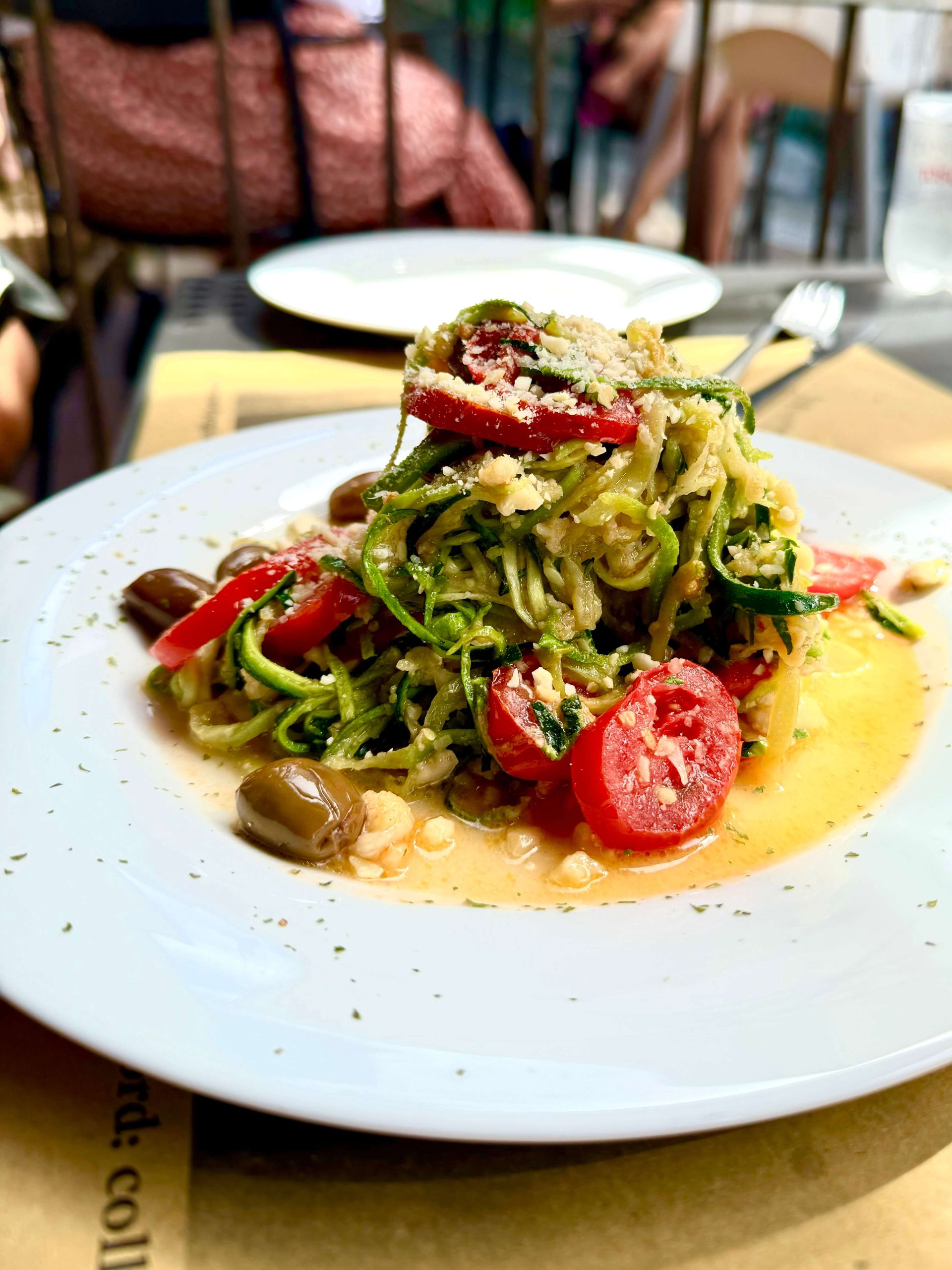
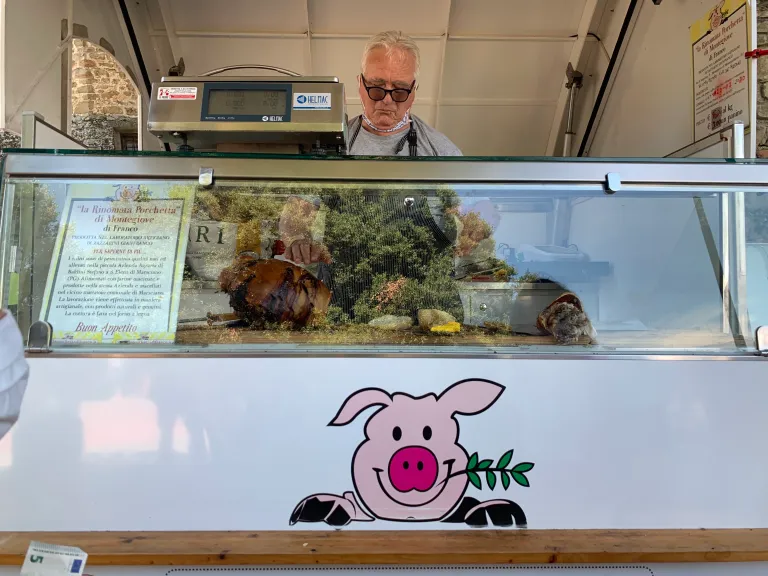
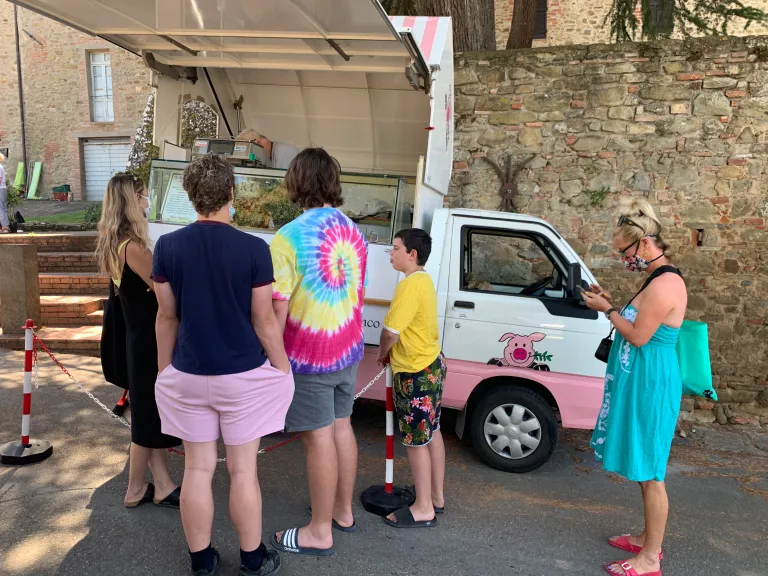
PORCHETTA
While on the subject of pigs, one of Umbria’s favourite street food, is the ubiquitous porchetta. Spit roast for 8-hours, a whole suckling pig stuffed with wild fennel, garlic and rosemary, is the region’s most famous sandwich
Slow Food in Umbria and Tuscany
The regions of Umbria and Tuscany are the Slow food capitals of Italy. Umbria earned its name as, ‘Italy’s green heart’ millennia ago when the Etruscans first farmed the fertile lands. Through the ages, locals have been rewarded with an abundance of seasonal flavours. With a dash of salt, a twist of pepper, or a splash of wine, flavours needs very little coaxing from the freshest of ingredients.
There is a gastronomic certainty (which is never boring!) to the food and cuisine of Umbria and Tuscany – and Italy in general. With each season, a new world of produce, flavours, colour, shape and texture emerges on dining tables around the country. And the passion with which this food and wine is produced, prepared and discussed by Italians is another gastronomic certainty.
Ulisse Brandli, maker of exquisite Pecorino cheese at Podere il Casale, an organic farm with eye-stetching views over the Val di Chiana explains: “You have to follow the seasons. Making cheese is like the terroir of winemaking. The climate, geography and seasonal vegetation (clover or hay) the sheep are eating all affect the flavour of the cheese.”
Spring FOOD in Umbria and Tuscany
Fruit blossoms, wild flowers and budding grapes breathe a collective sigh of relief after the cold winter. Expect wild asparagus, fresh artichokes, fennel, rosemary, strawberries and sage to feature on the supermarket shelves and the restaurant dishes. This is time for the salty-sweet tongue-teasing prosciutto e melone
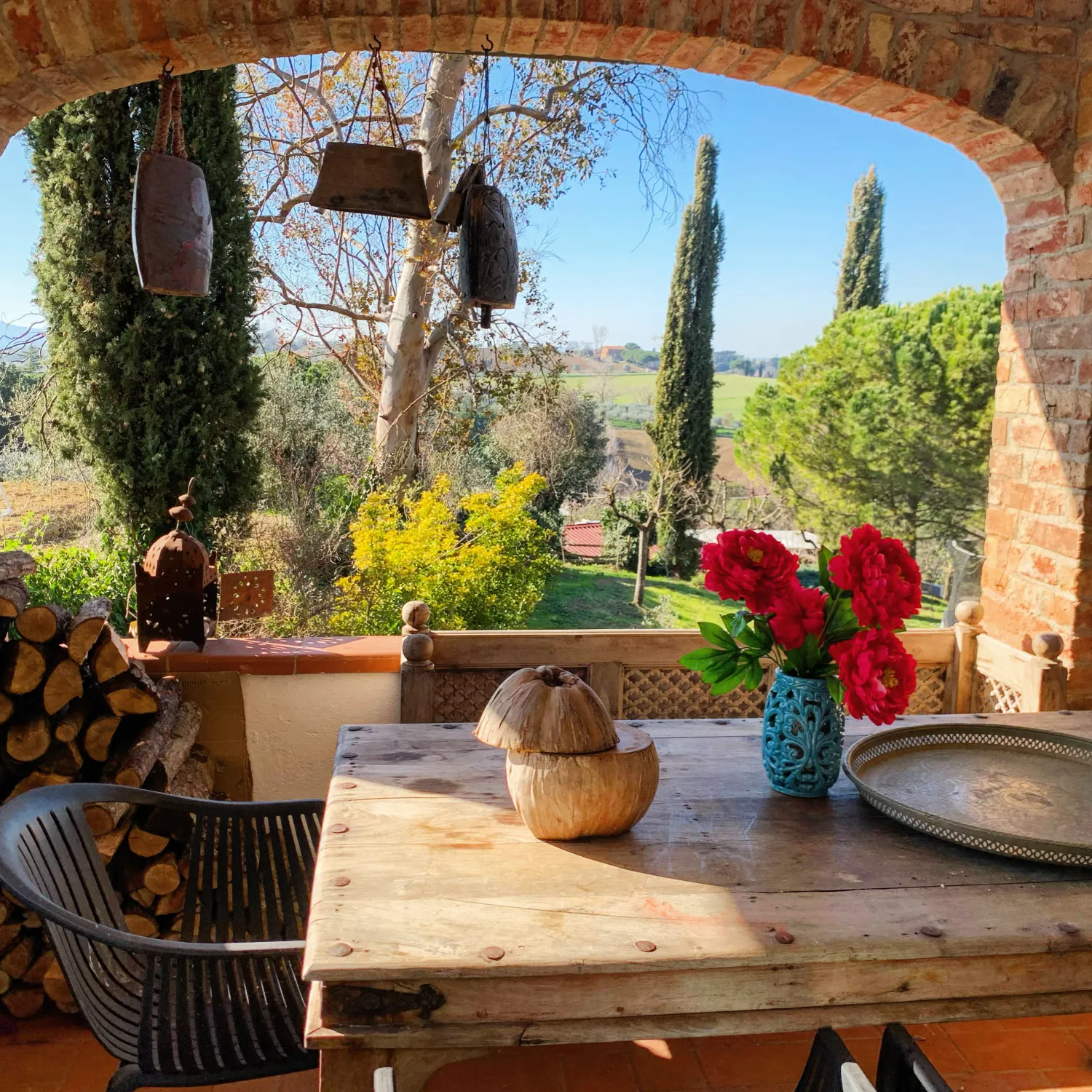
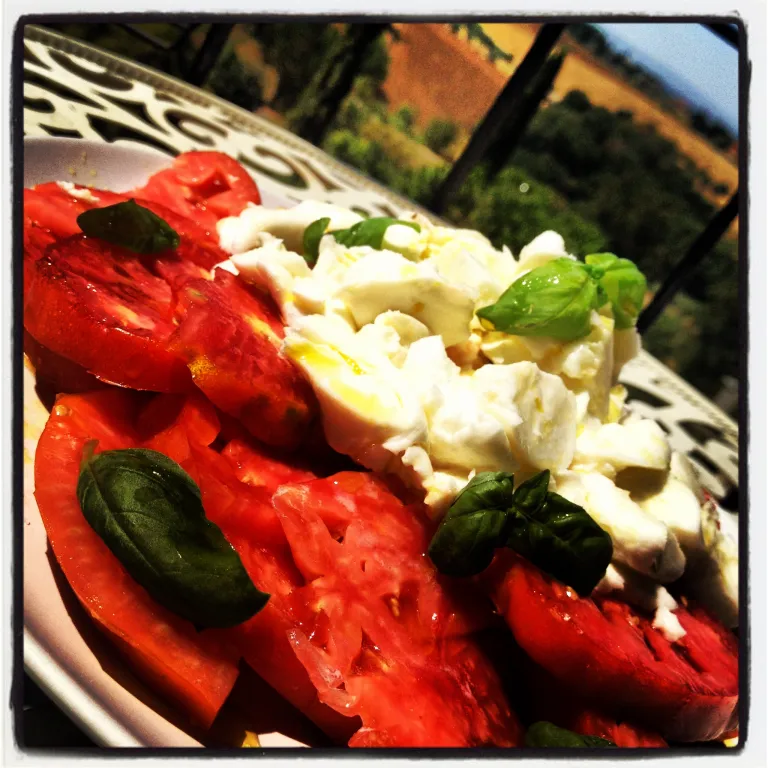
SUMMER FOOD IN UMBRIA AND TUSCANY
Summer explodes with brazen tomatoes, zucchinis and their bright yellow zucchini blossoms stuffed with mozzarella that fry delightfully. Peppers, eggplants, cucumbers and fruit conspire to perfect many an al-fresco meal. Baking summer days sliced by siesta, crawl languidly into long warm evenings. Festivals (called sagra or festa) celebrate the local all-star produce. Be it lentils beans or bistecca steak. Local bands provide live music for old-time dancing and people of all generations eat together under the stars. It may be a bit overwhelming for first-time visitors to order – but the menus are always written down – just follow the signs and join in.Autumn FOOD in Umbria and Tuscany
Vendemmia, or harvest, is a riot of vermilion and falling leaves. And by most people’s reckoning, harvest time is the best time to enjoy the full flavours of the local cuisine. Expect blue-skies, sunshine and sampling of the year’s first virginal olive oil. A sexy, spicy green revolution of the tongue. Pumpkins surrender in creamy risotto and chestnut flour treats such as castagnaccio (a thin heavy cake) are eaten with un café. Porcini mushrooms, and famed black truffles appear now on the menu too.
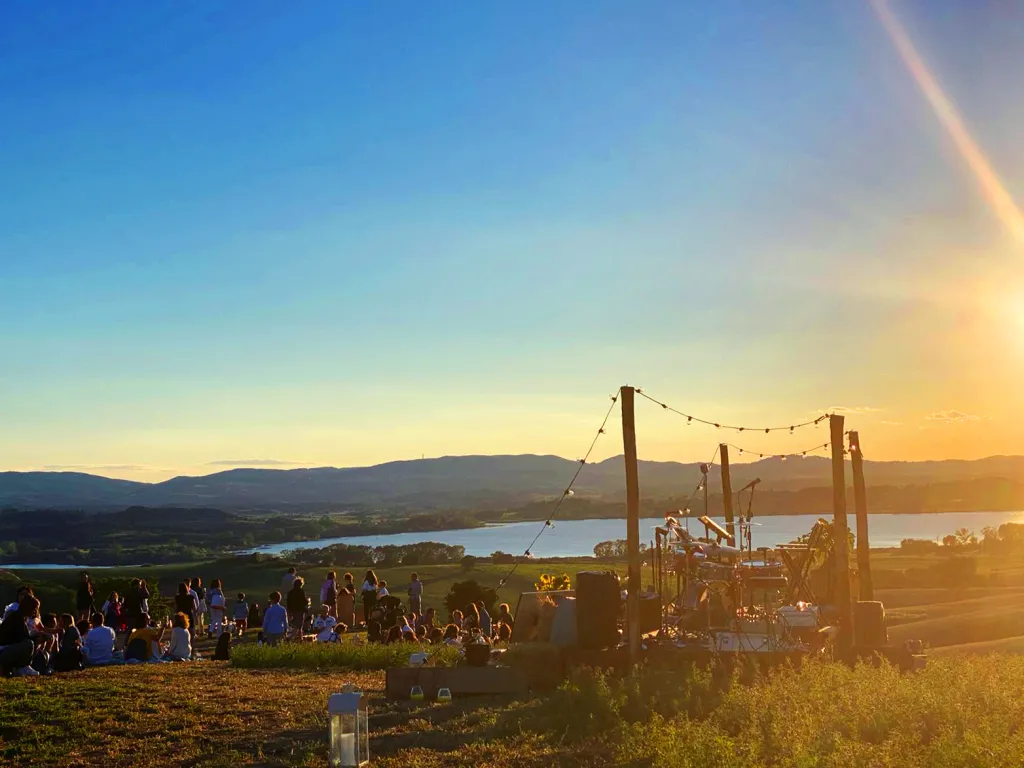
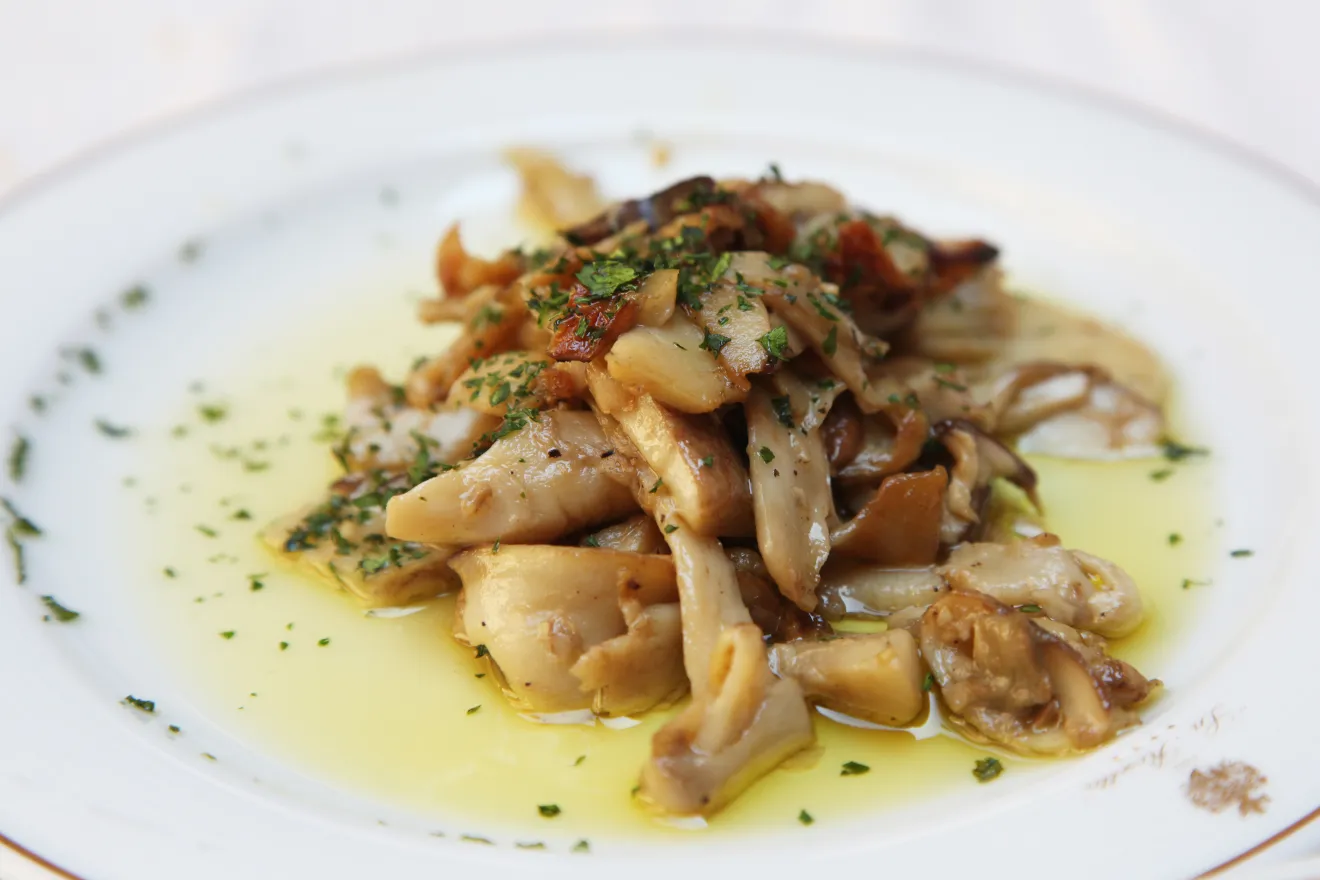
WINTER FOOD IN UMBRIA AND TUSCANY
Roasted chestnuts fill the frigid air with their sweet burnt perfume. Venturing into the wilder regions, local bars, fill with jovial men searching for wild boar. Restaurants offer hearty meat dishes such as cinghiale ragout served with pasta or polenta. Expect to find thick warming soups, made from vegetables and bread. Ribollata is a hearty soup made from leftover bread and lots of vegetables. Tongue-melting porcini mushrooms and black truffles, all served with a big, bold Tuscan red wine.
